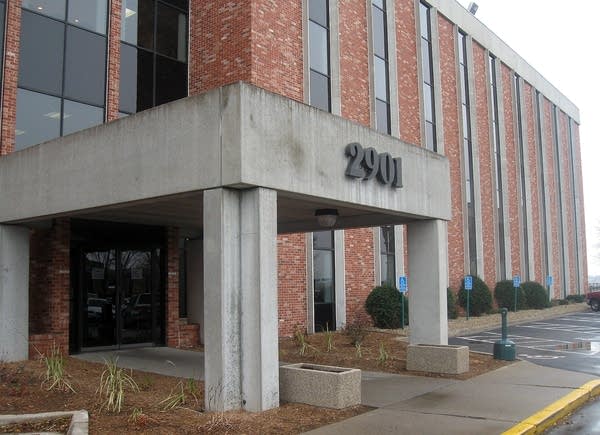Holding fewer ICE detainees, county jails feel effect of federal budget cuts
Go Deeper.
Create an account or log in to save stories.
Like this?
Thanks for liking this story! We have added it to a list of your favorite stories.

Some county jails are feeling the effect of federal budget cuts that went into effect on Friday.
In Minnesota, Immigration and Customs Enforcement rents bed space in five county jails to house immigrant detainees. Last week, ICE announced it was reducing the number of detainees held in custody due to uncertainty with the federal budget situation. ICE has declined to give specific numbers in Minnesota or nationally.
"ICE has reviewed several hundred cases and placed these individuals on methods of supervision less costly than detention," said ICE Deputy Press Secretary Gillian Christensen in a statement.
The priority for those held in custody would be detainees who pose significant risk to public safety, Christiansen said.
Turn Up Your Support
MPR News helps you turn down the noise and build shared understanding. Turn up your support for this public resource and keep trusted journalism accessible to all.
Anecdotally, immigration attorneys report they are observing local effects of the policy change.
"We are seeing a lot of people released," said Marc Prokosch, chair of the MN/Dakota Chapter of the American Immigration Lawyers Association.
John Keller of the Immigrant Law Center of Minnesota said that on the AILA listserv ten attorneys have talked about seeing clients released in the last few days.
"People who are low threat to community, or have no criminal record seems to be a common thread," Keller said.
Detainees who are released remain in removal proceedings, but typically move to supervised release, such as wearing an electronic ankle bracelet and checking in by telephone.
JAILS FEEL PINCH OF FEDERAL BUDGET CUTS
ICE does not run any detention centers in Minnesota. Instead, it rents space in jails in five counties: Ramsey, Sherburn, Carver, Nobles and Freeborn.

Nobles County houses two to ten detainees on any given night, and ICE pays $85 per night for each detainee. Sheriff Kent Wilkening said they have been told by ICE that "if this federal budget doesn't work out," they won't be bringing any more inmates. Although the number of boarders is small, they bring about $114,000 in revenue to the jail each year.
Carver County Sheriff Jim Olson said his numbers have been consistent. "We're right about where we normally are. We currently have 28 inmates that we're holding for ICE, and our average has been 28 to 29 over the past three years," Olson said. Carver County receives $70 a night per detainee and the average stay is 23 days.
The Ramsey County Jail reports the biggest change. Randy Gustafson, public information officer for the Ramsey County Sheriff's Department, said the jail has budgeted for 40 detainees a night, about 8 percent of the jail's capacity of 497, but Ramsey has been averaging 20 boarders. That's half the number they had a month ago, and down dramatically from 2009 when they typically housed 90 detainees a night.
With half the anticipated ICE beds going empty, at $80 a night, the Ramsey County Jail could see a half-million dollar shortfall this year.
"By missing our targets that way, being down half of where we're at, if we're only going to see 20 people instead of 40, we've got an implication of a revenue shortfall," Gustafson said.
Calls to Sherburne and Freeborn County Sheriffs' offices were not returned.
A LESS COSTLY WAY
Keller said the sequester's forced cuts echo a point groups like his have been making for years.
"Detaining and keeping people locked up and in custody is the most expensive way to do the nation's enforcement and there are cheaper ways to do the same thing," Keller said.
A pilot program in its second year in Minnesota is providing an alternative to incarceration. The Minnesota Detention Project, a collaboration between Keller's Immigrant Law Center of Minnesota, The Advocates for Human Rights and the University of St. Thomas School of Law is one of six sites nationwide to get funding from Lutheran Immigration & Refugee Service and Presbyterian Church USA to coordinate supportive services while clients remain outside of jail. An asylum seeker may need shelter. A victim of crime or torture has access to counseling.
It's too soon for definitive results, Keller said, but he is encouraged.
"What we can say is everybody we've been working with has appeared for all of their court hearings over the 15 months the project has been running," Keller said. "Many of our clients have been successful."




